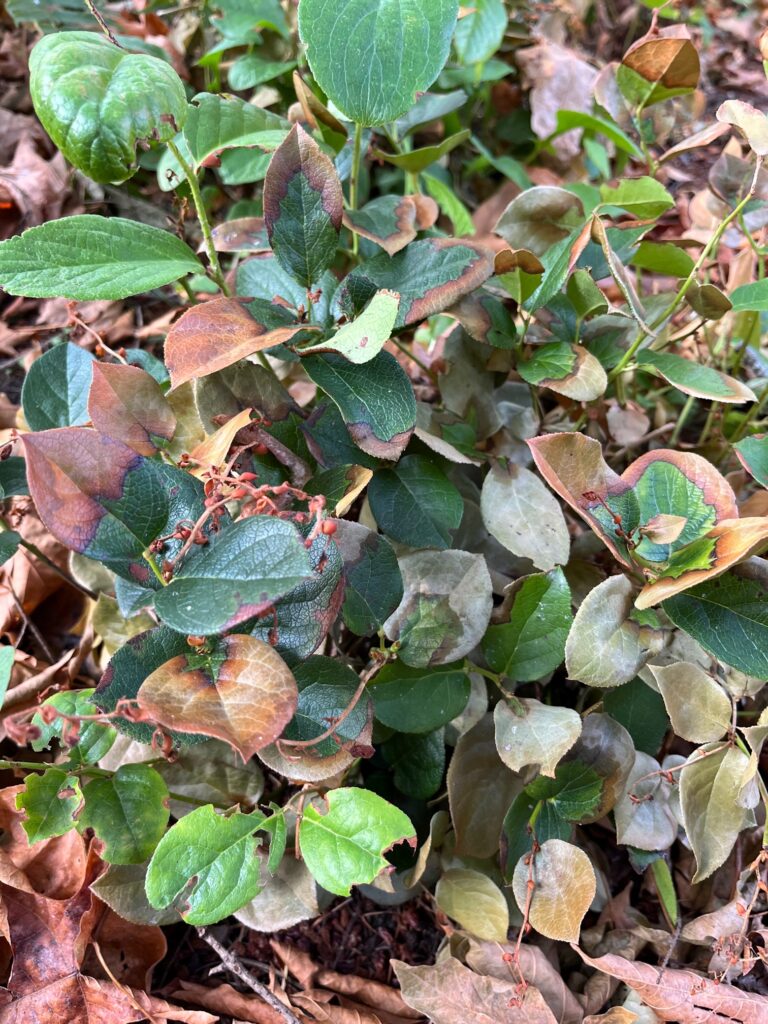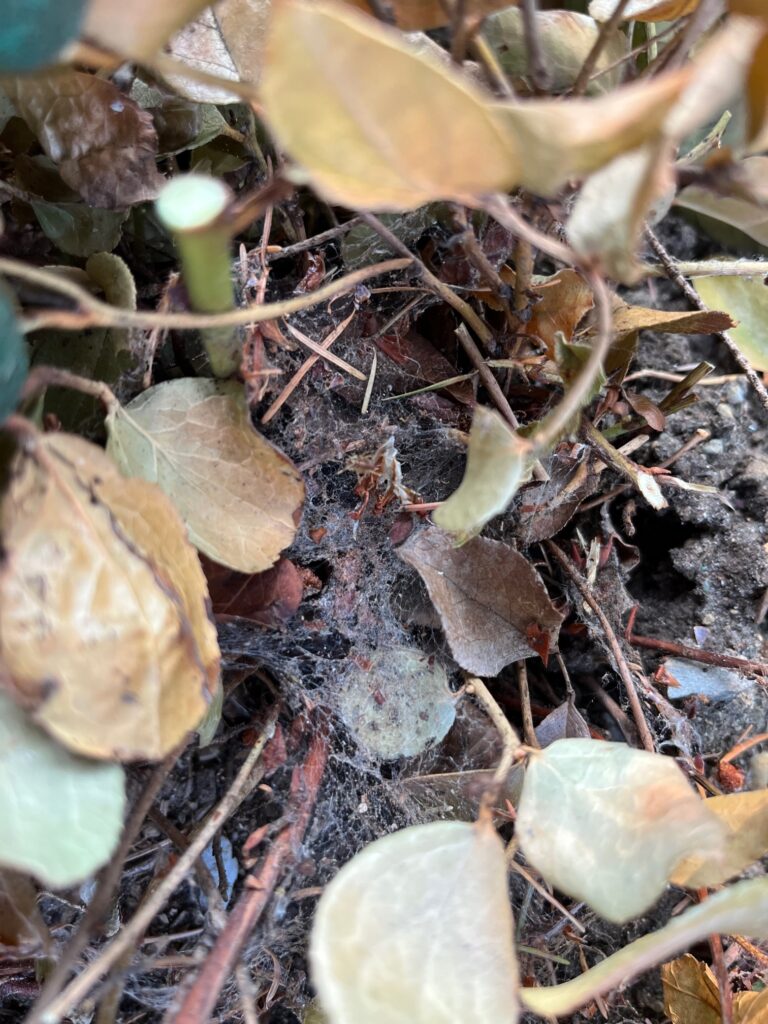Recently we have been noticed that quite a number of the salal plants which we planted last fall have been struggling. Many of their leaves are turning brown and drying up.

Concerned about the state of the plants, I took a closer look. What I noticed is that under the leaves of each salal plant there was a dense spiderweb formed. I was suprised to see at least 3 types of spiders within the space below the plant. My first thought was, “are these spiders causing the salal to wither and die?”

Determined to find out more about the cause, I searched “salal die-off” on the internet. I came to a site in which Nancy Turner, Distinguished Professor Emeritus, UVic Environmental Studies, was quoted:
“Over the past few years, I have noticed that salal (Gaultheria shallon) plants in various parts of the coast have been dying back. However, I have never seen it as bad as it is this spring (2019). Not only are the salal branches and individual plants turning brown and dying, very suddenly, but in some cases, entire patches of salal are perishing. A number of friends who have worked along the BC Coast have sent observations and photographs of this salal die-off, and I have seen it myself in several places. Even some of the salal growing in the gardens at The University of British Columbia in Vancouver have died, despite the obvious care the plants are receiving. I am aware of various theories about why the salal is dying. It could be a fungus disease epidemic; certainly salal is susceptible to some types of fungus. I suspect that climate change – warmer and drier winters without much snow, and hot, dry summers – has had a strong impact on the salal.”
I decided to reach out directly to Nancy Turner to see if she had discovered any more information about the cause of the salal die off since 2019.
I was surprised when she responded to my email the same day and was kind enough to forward me observations and research done by other scientists in her field.
One of the communications was from Dr. Douglas Deur from Portland State University. He noted:
“Salal die-off is more of an issue on the south coast of Oregon, but occasionally seen on the north coast. I have seen a few different causes mentioned, and it could perhaps be a combination of several factors….perhaps with changes in precipitation patterns complicating the picture. OSU Extension Service has released notices of greenhouse thrips (Heliothrips haemorrhoidalis), azalea lace bug, and a few types of root rot all as contributing factors to salal die-off on the south coast. “
I decided to go back and examine the salal plants more closely. I, indeed, did find that there were the small greenhouse thrips crawling under the leaves. Rather than the spiders being the cause of the die-off, they were actually opportunistically taking advantage of the situation to feast on the thrips.
We will keep an eye on these plants and hope that with the changing seasons, the greenhouse thrips will die and the plants will have a chance to continue on.